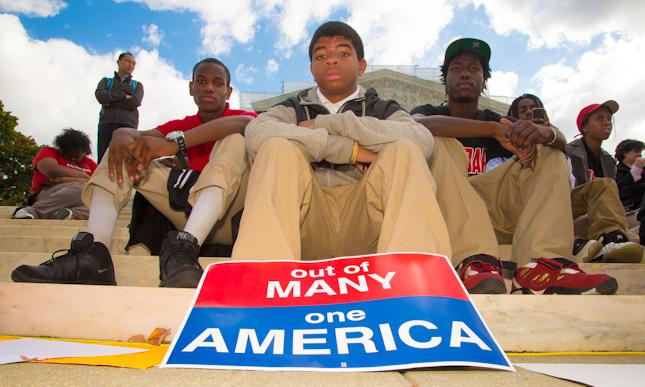High Court’s Affirmative Action Decisions: Impact on Georgetown Students
By • July 10, 2023 0 1083

On Thursday and Friday June 29 and 30, the U.S. Supreme Court rendered two decisions that could significantly impact Georgetown’s tens of thousands of university students and staff in significant ways. SCOTUS ended affirmative action — a race-based college admission’s program controversial for decades — and also halted President Biden’s executive order designating $450 billion dollars of new money for a student loan forgiveness program. Neither decision was a surprise. While both benefitted certain groups of students tremendously, they each contained flaws that hold lessons for the future.
There were strong agreements about both, however. Almost everyone agrees that diversity is inherently good for all institutions and is an inherently American goal. In addition, since the 1950s, Americans have strongly endorsed government support for college students so that all who qualify can afford to attend. Millions of American families have benefited.
Where both failed was in defining what the end goal was, what success looks like and when the programs should end. No less than Supreme Court liberal icons Justice Ruth Bader Ginsberg, Steven Breyer and the swing voter Sandra Day O’Connor concluded in 2003 that “race-conscious admissions policies must be limited in time. The Court expects that 25 years from now, the use of racial preferences will no longer be necessary to further the interest approved today.”
The lack of a defined end goal leads to misperceptions. “Most Americans seem to think affirmative action… does something significant for poor Black kids,” African-American writer Bertrand Cooper notes in this month’s Atlantic Ideas article “The Failure of Affirmative Action.” “The Supreme Court affirmed race to be an acceptable criterion within a holistic admissions framework in 1978. The regime persisted for 45 years without manifesting any progress of note for the Black poor,” Cooper writes. “In 2012, six percent of Harvard’s freshmen identified as Black – “a far cry from racial parity when at the time, Black Americans made up 14 percent of the population and 15 percent of the country’s young adults (the percentages are slightly lower now).”
By 2015, by using race-based affirmative action as an admission’s criteria, Harvard reported that more than 15 percent of incoming freshmen were Black. The university had acquired perfect representation.” But did that make Harvard more diverse? Not in terms of poverty, class or socio-economic background, many argued. “Only seven or eight of said 154 Black freshmen would have come from poor families,” Cooper writes. “The other 140 or so Black students at Harvard were likely raised as far from the bottom as any Black child can hope to be. In addition, 40 percent of Black students in the Ivy League were first- or second-generation immigrants from Africa — the highest educated and wealthiest of all immigrant-sub-groups in the United States.
Today Georgetown University reports that of their over 7000 undergraduate students, 9 percent are African-American,12 percent Hispanic, 14 percent Asian and 48 percent White. In addition, 14 percent are international – that counts in most universities as part of their “geographic diversity” quotient — although a plurality come from only two countries: China and India. None of these meet U.S. demographic parity. In addition, affirmative action only matters in elite colleges with extremely low rates of admission compared to applicants – under 25 percent. Currently, Georgetown University’s percentage is 17; George Washington University’s is 45.
So what is diversity exactly? Critical mass? How are they defined and measured? “This latest decision by the Court does not change what we know to be true: diversity matters in fulfilling our obligations in preparing future stakeholders in our democracy,” Georgetown President John J. DeGioia said in a written message to the community. “We continue to be committed to ensuring that the full range of voices, histories and experiences are included in our academic community.”
But the university president does not define diversity as a strictly measureable goal. DeGioia notes that “the Supreme Court explicitly determined that past societal injustice is not a justification for present-day affirmative action. The only defense for the use of affirmative action by schools according to the Court, is to obtain the educational benefits that flow from a diverse student body.”

